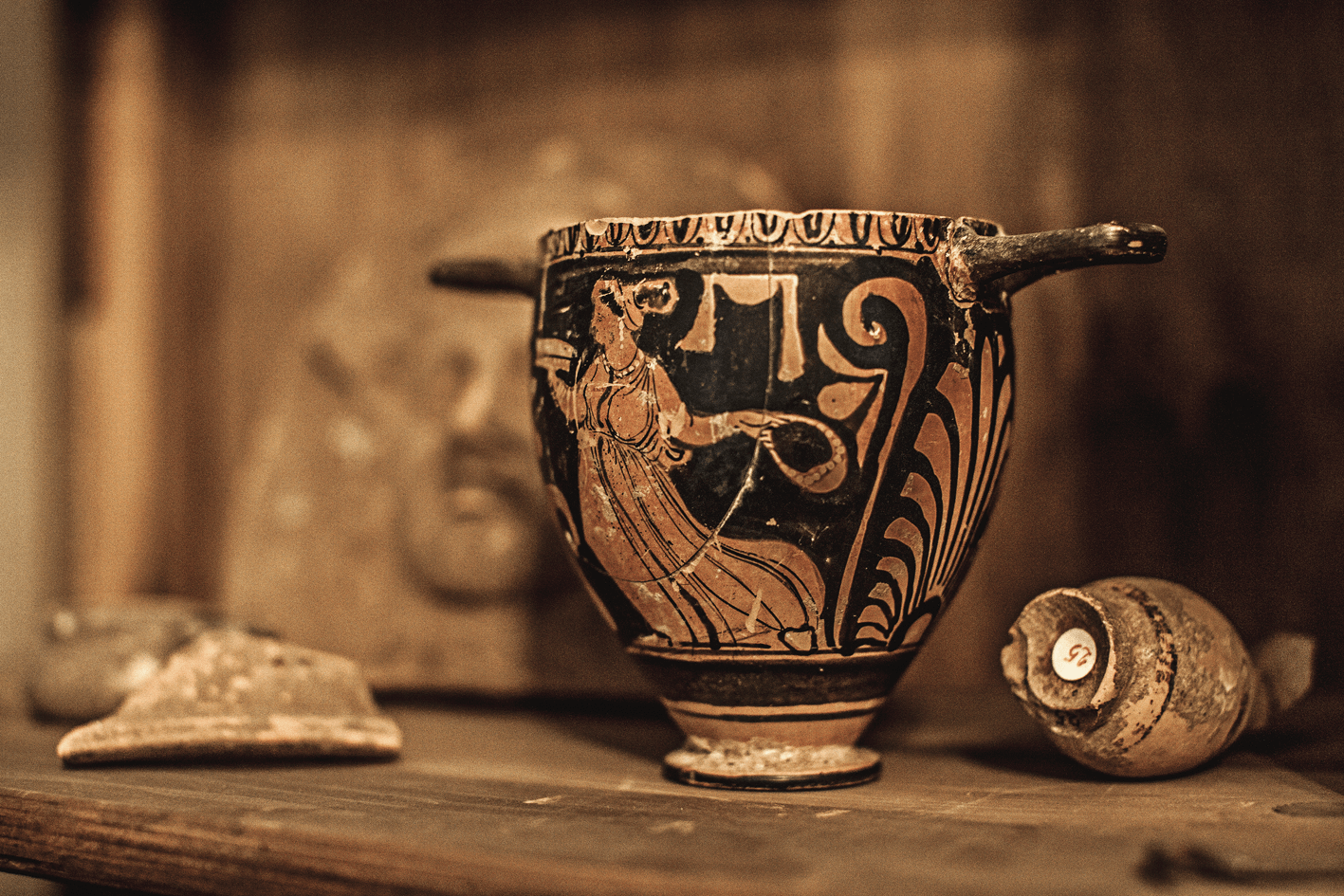Archaeological finds in Basilicata testify to the presence of ancient Greek settlements on the Ionian Coast of Italy that were established during the Trojan War and the Mycenaean era. Fleeing their homelands, the Greeks sailed in small boats in search of suitable places to build new towns and safe harbours for their ships, as well as fertile land that – unlike their own dry and rocky soil – was criss-crossed by rivers and streams, ideal terrain for the cultivation of wheat and the planting of olive trees and vines.
One of these places is now the Battifarano Estate.
Located on the Basilicata coast, which was part of Magna Graecia, the area was inhabited by the indigenous populations of Chones and Oenotrians. The name Oenotrians, coined by the historians of Ancient Greece from the word oinos, meaning ‘land of wine’, testifies to the cultivation of the vine and a ritual use of wine since ancient times. Evidence of viticulture is also confirmed by the discovery of a tomb located in the hinterland (tomb 216 of Chiaromonte, 6th century BC) in which a pattern of seeds reveal that a bunch of grapes had been buried with the body.
Wine played an important role in Greek society: it was used during the symposium, when people would meet, talk, and enjoy each other’s company. In the polis (a city-state in ancient Greece), drinking wine was a symbol of social cohesion and an expression of fellowship between different aristocratic families under the protection of Dionysus, the god of the grape harvest, winemaking, and wine.
Following the discovery of a necropolis in Basilicata, archaeologists found grave goods that include ceremonial vases and utensils depicting the eternal banquet and symposium in celebration of Dionysus, and the attainment of immortality. Several archaeological items have been discovered on the Battifarano estate itself. These artefacts – from the Bronze age (13th century BC) to the 1st century BC – testify to the continuous presence of a highly developed civilisation. These precious artefacts were handed over to the Authority for the Protection of Archaeological Finds of Basilicata which gave the Battifarano family permission to keep some of them. One the most significant wine-related objects is a small red-figure vase, dating back to the 5th century BC, depicting Dionysus and a ceremonial procession. A detail of this amphora has been reproduced on the label of our Akratos wine.

The nearby town of Nova Siri faces the sea from where the ancient Greeks arrived, firstly in small groups, then as colonists to settle in this fertile land. They found the ideal environment: a plain across which five rivers flowed into the sea a few kilometres away. At strategic points on their trading routes, they established two large towns with a multitude of buildings, facilities, canals, roads, and decorated temples: Metaponto (Achaen town of the 7th century BC, main agricultural centre of the area) and Siris-Herakleia (the commercial colony of Siris, on the Ionian coast, founded in the 7th century and later destroyed by enemy armies, it was replaced by the Taranto colony of Herakleia in 433 BC).
Vast archaeological sites give visitors an idea of the size of these towns. The national museums of Metaponto and Policoro display exhibits that testify to their wealth: the architectural decorations of the temples, items of pottery, jewellery, everyday objects, and grave goods. Along with their intrinsic value, they also give an idea of the mystical and philosophical beliefs of the population.
The Greek philosopher Pythagoras established his famous school in Metaponto. Daily life, the symposium, as well as literature, are represented and immortalised on the red-figure vases, among the most beautiful ever painted in Magna Graecia. This area is considered the cradle of civilisation, with sites and museums of international interest.
Metaponto is of great archaeological interest, thanks to the original town layout, which includes the temple, the theatre and ancient potters’ quarter. The national museum of Metaponto boasts rare pre-colonial items of pottery, architectural decorations, and Orphic grave goods. The remains of the Palatine tables, an impressive Doric temple, are a short distance from the town.
On the hill where the ancient city of Siris-Herakleia once stood is now the town of Policoro, with its promenade up to the Baron’s Castle offering spectacular views of the sea. At the National Museum of Siritide, you can see archaeological finds dating from prehistoric times to the Roman age: votive offerings from the sanctuaries, red-figure vases, and Oenotrian grave goods.
Elisabetta Franchi, archaeologist and museologist
